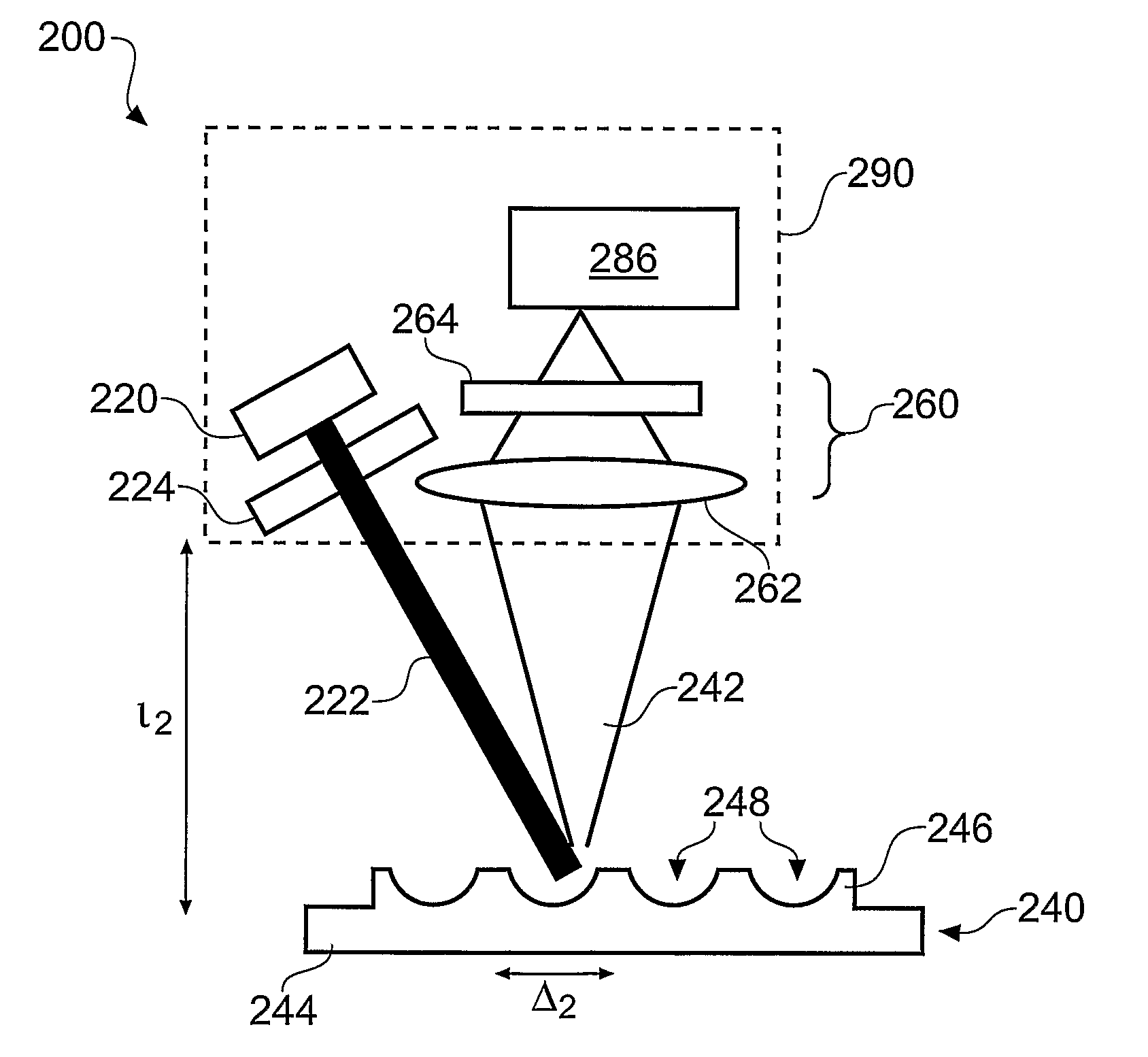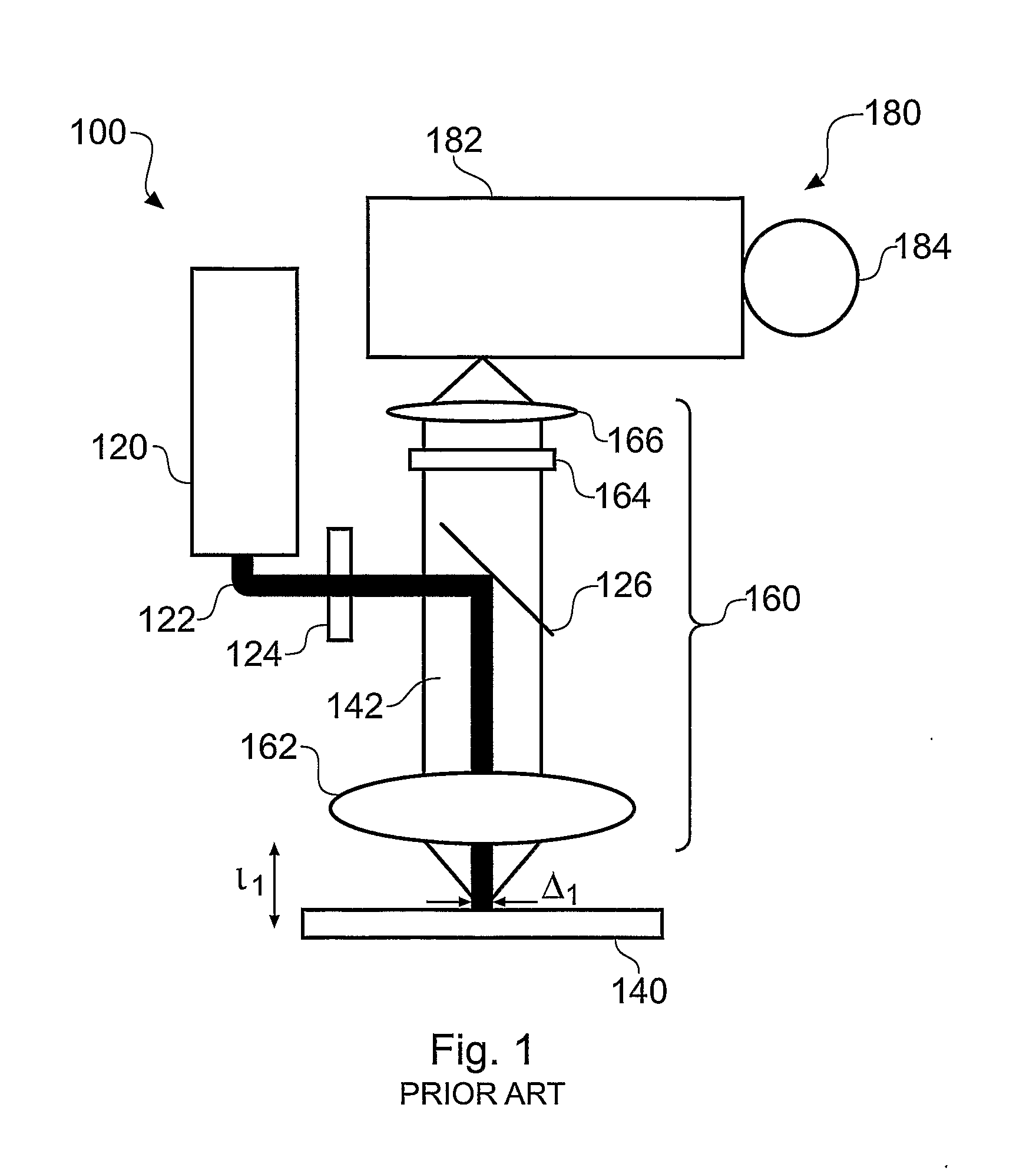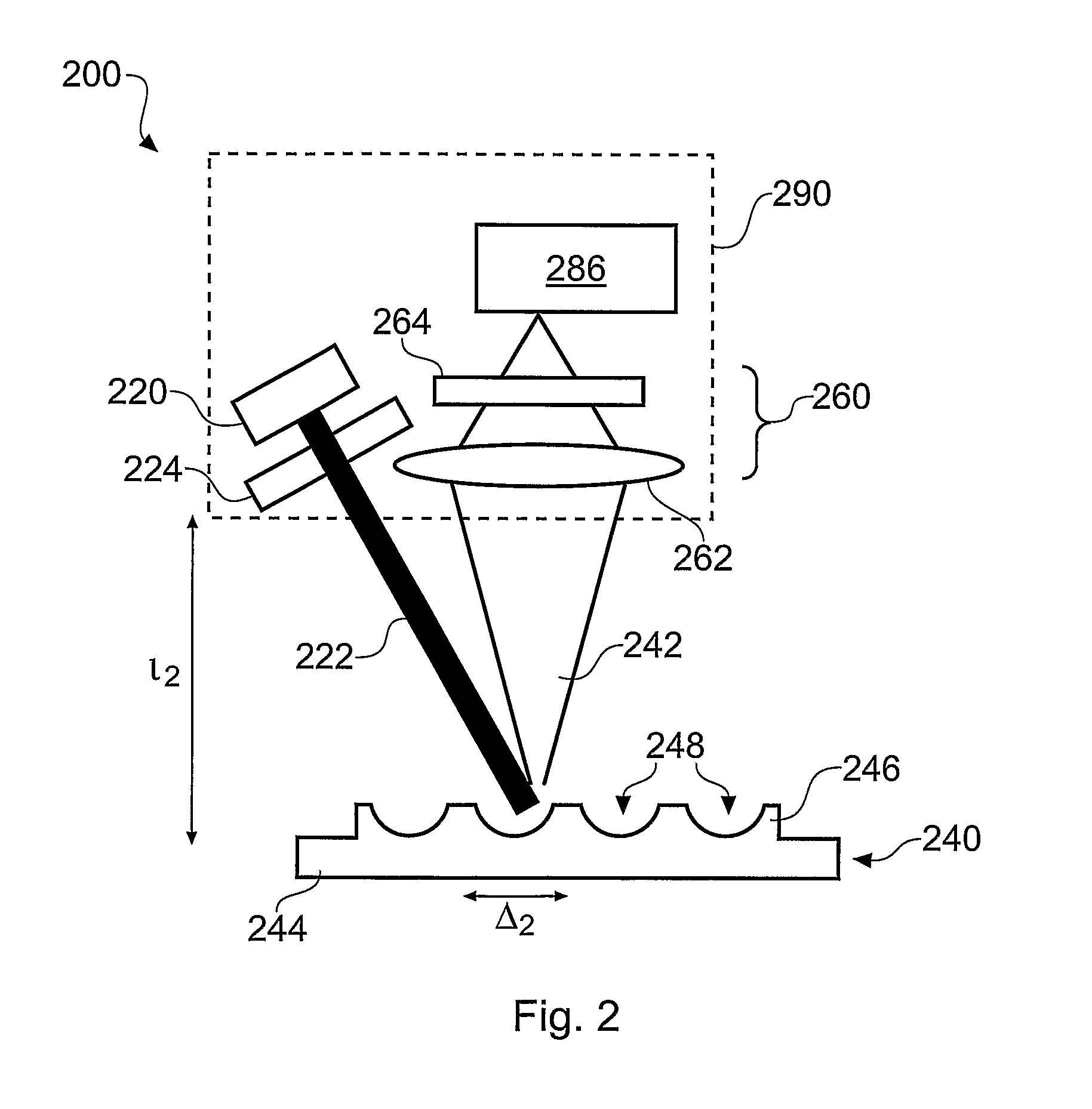Raman spectroscopy
a raman spectroscopy and spectroscopy technology, applied in radiation pyrometry, instruments, material analysis, etc., can solve the problems of raman spectroscopy drawbacks, high power sources that are not only bulky and expensive, and place an upper limit on the intensity of optical radiation sources, so as to improve the performance of the sour
- Summary
- Abstract
- Description
- Claims
- Application Information
AI Technical Summary
Benefits of technology
Problems solved by technology
Method used
Image
Examples
first embodiment
[0068]FIG. 2 shows a Raman spectrometer 200 according to the invention. The spectrometer 200 comprises a source / detector package 290 and a substrate 240. The source / detector package 290 comprises an optical source 220 and a first filter 224 for filtering optical radiation 222 generated by the optical source 220. The package 290 also includes input channel optics 260 and a spectral analyser 286.
[0069]The input channel optics 260 comprises a first lens 262 for gathering Raman scattered radiation 242 and a second filter 264 for rejecting any non-Raman scattered radiation. The input channel optics directs Raman scattered radiation to the spectral analyser 286.
[0070]The source / detector package 290 is configured to direct optical radiation 222 on to the surface of the substrate 240 and to collect Raman scattered radiation 242 that is generated by a sample that is placed proximal to the surface of the substrate 240. The substrate 240 comprises a support layer 244 with a metallic film 246 f...
second embodiment
[0074]FIG. 3 shows a Raman spectrometer 300 according to the invention. The spectrometer 300 comprises an optical source 320, a substrate 340 and a detector package 380.
[0075]The optical source 320 comprises a laser diode. The laser diode generates a beam of optical radiation 322 that is filtered by a first filter 324 to provide a monochromatic beam. The optical radiation 322 is coupled in to an optically transparent support layer 344 of the substrate 340. A blazed grating is written in to the support layer 344 for coupling the optical radiation 322 from the support layer 344 in to a metallic film 346 formed on the support layer 344. Optical radiation 322 excites plasmons in voids 348 that are formed in metallic film 346.
[0076]Sample material is placed in the voids 348 and excites Raman scattered radiation 342 in response to the plasmons generated by the optical radiation 322. The Raman scattered radiation 342 is emitted from the metallic film 346 in a direction that depends upon th...
third embodiment
[0079]FIG. 4 shows a Raman spectrometer 400 according to the invention. The Raman spectrometer 400 comprises an optical source 420 for generating optical radiation 422. The optical radiation 422 is filtered by a first filter 424 and guided in to an optically transparent support layer 444 formed in a substrate 440. The optical radiation 422 couples in to a metallic film 446 formed upon the support layer 444 over a distance of Δ4. The distance Δ4 can be greater than 100 micrometers.
[0080]Optical radiation 422 excites plasmons in voids 448 that are formed in the metallic film 446. The plasmons couple energy to sample materials that are located near the voids 448. The excited sample material gives rise to Raman scattered energy that couples via plasmons back in to the optically transparent support layer 444. The support layer 444 acts as a waveguide that guides Raman scattered radiation 442 through the support layer 444.
[0081]Detector package 480 is provided to detect the Raman scattere...
PUM
| Property | Measurement | Unit |
|---|---|---|
| diameter | aaaaa | aaaaa |
| size | aaaaa | aaaaa |
| diameter | aaaaa | aaaaa |
Abstract
Description
Claims
Application Information
 Login to View More
Login to View More - R&D
- Intellectual Property
- Life Sciences
- Materials
- Tech Scout
- Unparalleled Data Quality
- Higher Quality Content
- 60% Fewer Hallucinations
Browse by: Latest US Patents, China's latest patents, Technical Efficacy Thesaurus, Application Domain, Technology Topic, Popular Technical Reports.
© 2025 PatSnap. All rights reserved.Legal|Privacy policy|Modern Slavery Act Transparency Statement|Sitemap|About US| Contact US: help@patsnap.com



